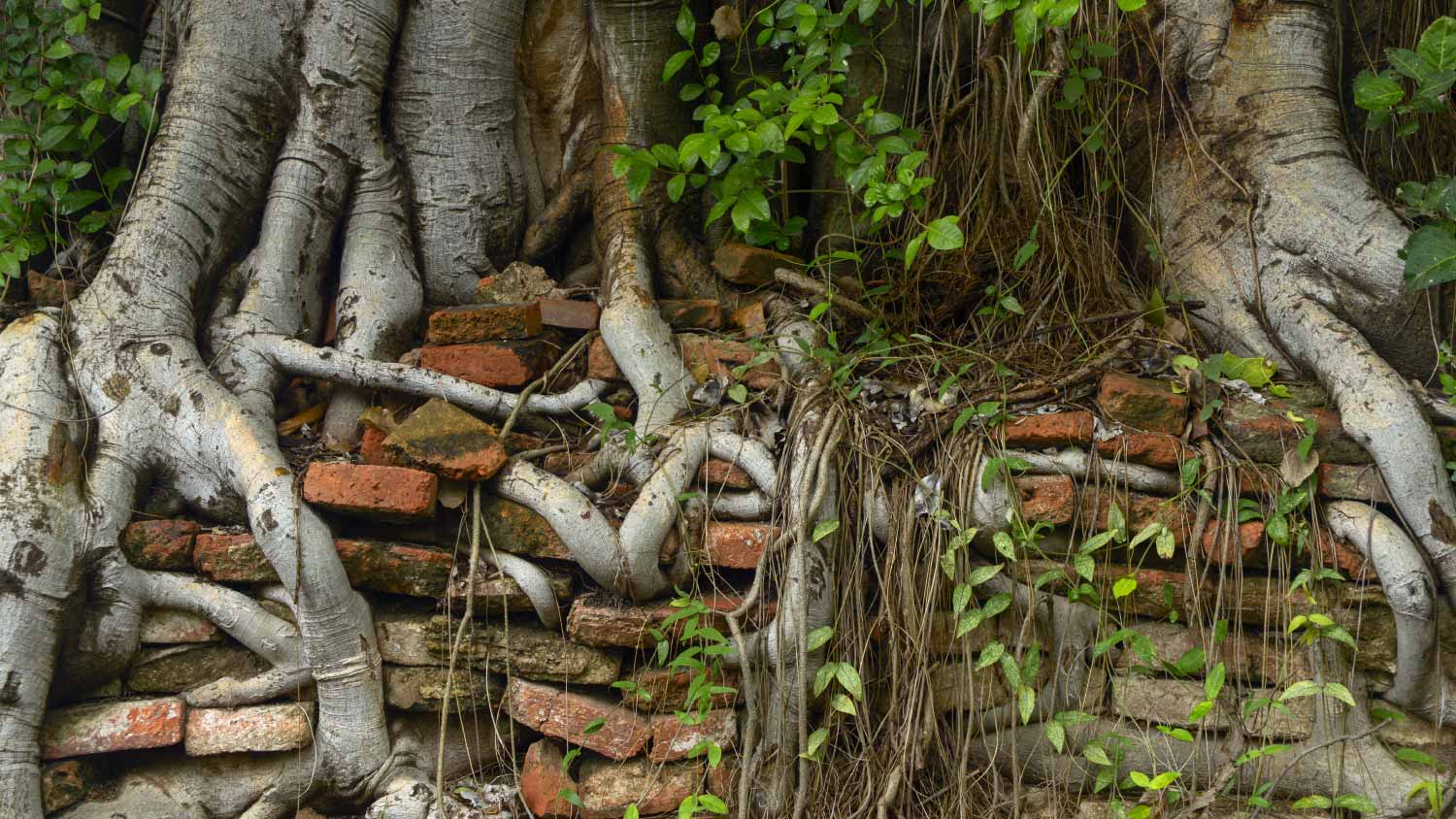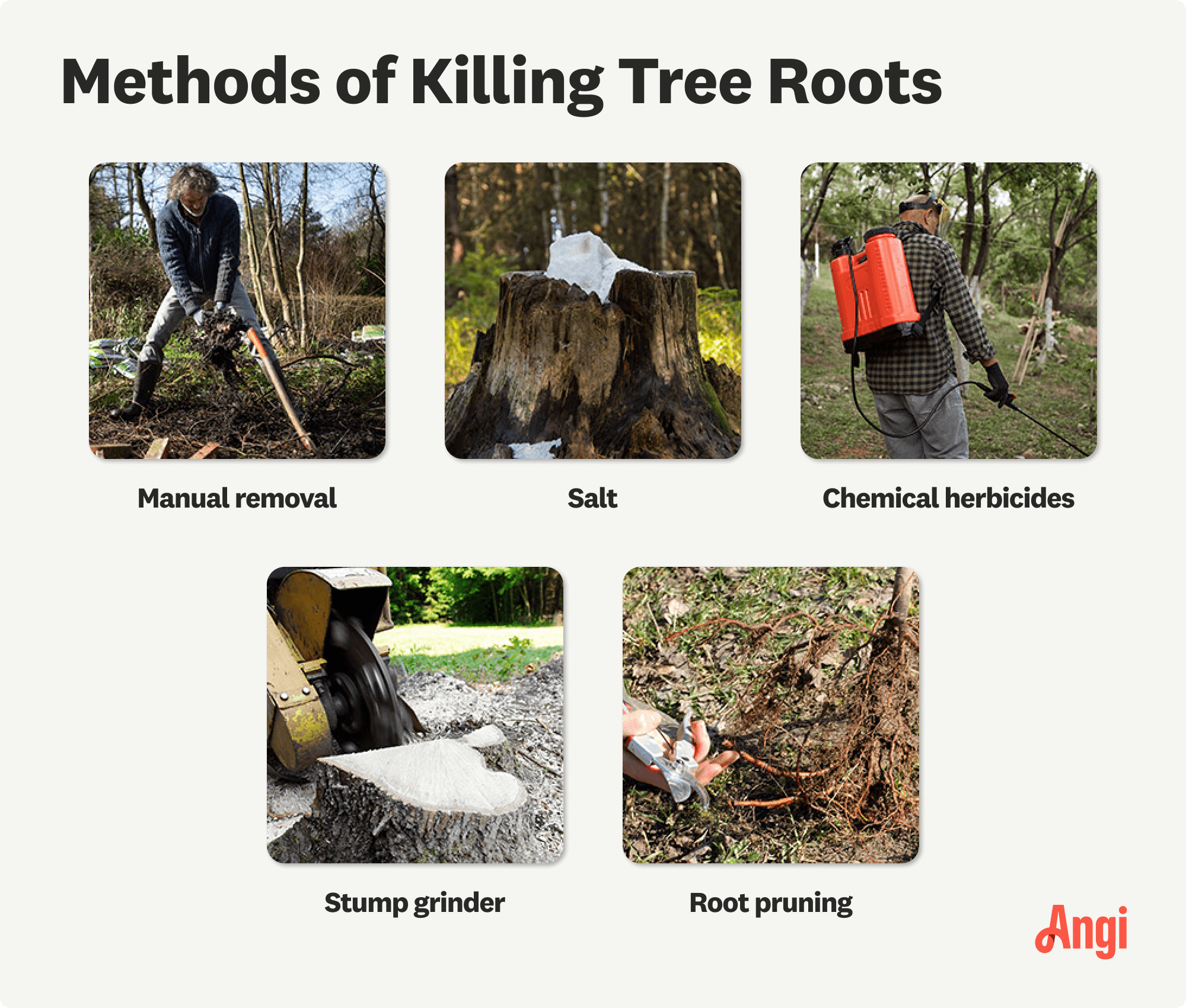
The cost of tree stump removal depends on size, removal method, location, and more. Our guide will show you how much stump removal costs.
Handle tree roots with confidence


Property owners have the right to eliminate tree roots or branches that stray into their property.
Avoid future conflicts by talking with your neighbors about overgrown trees.
If you cause the tree to die by cutting its roots, you may be held liable for the damage.
Don’t forget to call 811 before you dig into unknown tree roots.
Wondering whether you can cut tree roots on your property? Trees are great for shade and beautiful to look at, but the roots can cause damage to structures on your property. Since trees don’t follow human rules for trespassing, you might sometimes end up with some roots on your property that come from a tree growing somewhere else.
Property owners are permitted to cut tree roots or branches that stray into their property, but it’s best to communicate with the owner of the tree before eliminating them. If you have some roots causing a problem, whether you decide to tackle the problem yourself or hire a local tree cutting pro, here’s what you need to know to wrangle the roots and keep your structures safe.
The best way to make sure that any root trimming that needs to occur will be amicable is to discuss the issue with your neighbor before trimming roots from their tree that are growing over your property line. While there may be rules that allow you to trim roots from their tree in certain circumstances, getting their approval and agreeing beforehand can reduce the risk of conflict down the road. They may not realize that the roots are a problem, so working it out with them before taking any action is the best way to go.
Since laws concerning trees can differ from place to place, you should always look into the local ordinances and rules concerning trees and property lines before cutting any roots. This can save you from fines and liability down the line if problems arise from trimming roots from a neighbor’s tree. Here are some good places to look for this information:
Your municipal Building and Planning commission
Your municipal city website
Your local university extension service
Local landscaping and tree care companies

In most cases, you can trim tree roots that are causing damage to your property, whether it be disruption to the pavement or a fence or structure. Most communities allow for such trimming as the roots are threatening or actively damaging your property. Some common examples include when tree roots disrupt your landscape, cause underground plumbing issues, or cause structural damage.
However, if, in the course of trimming the roots, you cause damage to the tree that results in the tree dying, you might be held liable for the damage. If there are significant roots, it’s worth consulting a professional before tackling the job yourself. Even if it doesn’t result in legal action, killing a tree close to your property line could result in a dead tree falling onto your property.
While it might seem strange, some trees that grow on your property are still covered under tree ordinances. Some municipalities consider certain trees endangered, protected, or heritage trees; some rules govern their care and maintenance. These trees are usually covered by an ordinance that treats them as a benefit to the entire community, so there might be specific rules concerning their care. While trimming the roots of these trees is usually allowed, you should not cut large roots yourself as this could damage the tree.
Most state and local governments will have special rules regarding trees that are considered noxious or invasive. These trees are usually considered problem species because they’re poisonous, especially prone to damaging property, can spread and grow quickly, or are a threat to another local species. Consulting your local university extension or looking at your state and local government websites for information about these particular trees can get you the information on your particular tree. If you have roots from an invasive or noxious tree causing you problems, your local government might thank you for taking the whole thing out rather than trimming the roots.

Before digging tree roots to cut them, remember to call 811 to mark your local utility lines. The last thing you want when you’re trying to save your sidewalk is to cause a water pipe to burst.
Since cutting a tree’s roots can cause damage to the tree, there are some things to know about trimming the roots safely. For larger trees over 15 feet tall, you should never cut roots within five feet of the trunk. For smaller trees, you should leave roots within a two-foot radius of the trunk. In all cases, it’s not safe to trim more than 25% of the roots from a tree. Damaging a tree can result in the need to remove a dead tree later, or worse, can result in a dead tree falling onto your property.
From average costs to expert advice, get all the answers you need to get your job done.

The cost of tree stump removal depends on size, removal method, location, and more. Our guide will show you how much stump removal costs.

Discover the average tree maintenance cost, key price factors, and tips to save. Get expert insights to plan your tree care budget with confidence.

Get a clear estimate of palm tree maintenance cost, including trimming, fertilization, and pest control, so you can keep your palms healthy and your budget on track.

Trees are fantastic marvels of nature, but they can also be large and cumbersome. Can you get the city to trim or remove a tree for free? Keep reading to find out.

Japanese flowering cherry trees require some know-how to keep them thriving and disease-free. Read on to learn how to grow flowering cherry trees.

Removing a small tree can free up yard space and prevent future damage to your property. Learn how to remove a small tree while staying safe.